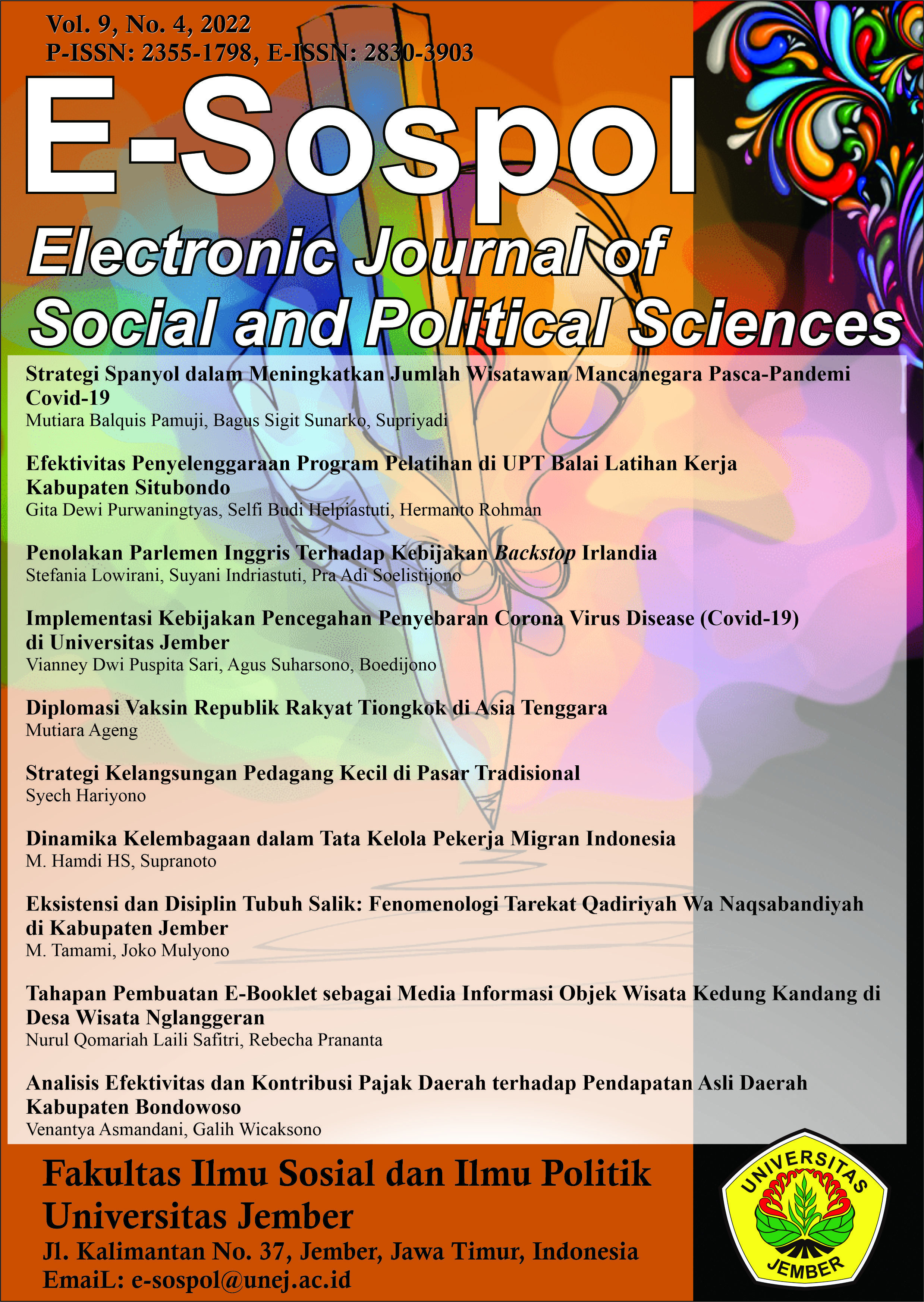Strategi Kelangsungan Pedagang Kecil di Pasar Tradisional
DOI:
https://doi.org/10.19184/e-sos.v9i4.36373Abstract
The Small Scaled businesses at Blauran traditional market Surabaya perform their businesses commercially in impersonal and independent market system. In order to survive, those businesses depend hiqhly on the ability in attracting buyers/\. The trategy used to draw the buyers’ interests is by adding the capitals of the businesses throuqh merchandise credit system, in the sense that they continuously increase their merchandise on display by gaining them from the creditors. This study applied qualitative method to obtain descriptive data, while the research samples were taken by using Purposive Sampling technique, based on the merchandise they sell to the customers.
The data analysis described the social background of those small-scaled business operators before they decided to be small-scaled traders, their ages and education, their geograpchical mobility, and their binding to their native culture. In addition, it also discussed the business activities of those small-scaled merchants, related to their business chains, their capitals and their relationships with the buyers. In their trading chains, those merchants applied the strategy of increasing their business capital throught merchandise credit system, producer consigment, agent consigment, and supplier consigment. There are five patterns of credit they applied in order to increase their capitals. They are : (1) regular customer credit, (2) upon selling payment credits, (3) installment system, (4) consignment, and (5) comission system. The first pattern enables the merchants to obtain a relatively large amount of merchandise credits with a payment due after a certain period of time. The second pattern provides the merchants with merchandise in the morning and the payment due is at night. While the third pattern enables them to get merchandise with a regular partial payment at agreed time periodically. The fourth pattern means that they obtain merchandise from supplier and the payment can be done when the goods have been sold. And the fifth pattern enables the merchants to obtain merchandise with the basic price agreed by the merchants and the suppliers, then the merchants can resell it at a price profitable for them. The above five patterns are done by the merchants, not only to increase the volume of their merchandises but also to establish position in the distibution chains of the market.
Downloads
Downloads
Published
Issue
Section
License
Penulis yang mengusulkan naskahnya untuk dapat diproses penerbitannya pada e-SOSPOL dianggap telah menyetujui beberapa hal sebagai berikut:
1. Penulis tidak dapat menarik naskah yang telah usulkan untuk diproses hingga mendapat jawaban dari Ketua Dewan Penyunting atas status naskah artikel ilmiahnya (diterima atau ditolak untuk diterbitkan).
2. Penerbit tidak bertanggung jawab terhadap kasus plagiasi atas artikel yang terbit pada e-SOSPOL
3. Penerbit tidak bertanggung jawab atas data dan isi dari artikel yang diterbitkan pada e-SOSPOL, dan sepenuhnya merupakan tanggung jawab penulis.








